Scottish Tablet: Prepare to be utterly captivated by this confectionary masterpiece! Imagine a sweet treat so intensely delicious, so melt-in-your-mouth creamy, that it instantly transports you to the rolling hills and charming villages of Scotland. This isn’t just candy; it’s an experience, a taste of Scottish heritage passed down through generations.
The history of tablet is as rich and intriguing as its flavor. While its exact origins are shrouded in a bit of mystery, it’s believed to have evolved from traditional fudge recipes, with Scottish cooks adding their own unique twist. It became a staple in homes and local sweet shops, a symbol of warmth, hospitality, and a little bit of indulgence. For many Scots, the taste of Scottish Tablet evokes cherished childhood memories and family gatherings.
So, what makes this treat so irresistible? It’s the perfect balance of sugary sweetness and buttery richness, with a slightly grainy texture that simply melts on your tongue. Unlike some candies that are overly processed, homemade tablet has a rustic charm and an authentic flavor that’s hard to resist. Whether you enjoy it with a cup of tea, as an after-dinner treat, or simply as a sweet pick-me-up, Scottish Tablet is guaranteed to satisfy your sweet tooth and leave you craving more. Let’s embark on a journey to create this iconic Scottish delight in your own kitchen!
Ingredients:
- Granulated Sugar: 2 lbs (approximately 900g) – The foundation of our tablet, providing sweetness and structure.
- Sweetened Condensed Milk: 1 (14 oz) can (approximately 400g) – Adds richness, creaminess, and helps prevent crystallization.
- Unsalted Butter: 4 oz (113g), cut into cubes – Contributes to the smooth texture and adds a lovely buttery flavor.
- Whole Milk: 1/4 cup (60ml) – Helps to dissolve the sugar and create the right consistency.
- Vanilla Extract: 1 teaspoon (5ml) – Enhances the overall flavor profile, adding a touch of warmth. (Optional, but highly recommended!)
Preparing the Tablet Mixture:
- Combine Ingredients: In a large, heavy-bottomed saucepan, combine the granulated sugar, sweetened condensed milk, butter (cubed), and whole milk. Using a heavy-bottomed pan is crucial to prevent scorching and ensure even heat distribution.
- Initial Dissolving: Place the saucepan over medium heat. Stir the mixture constantly with a wooden spoon or heat-resistant spatula. The goal here is to dissolve the sugar completely before the mixture starts to boil. This prevents grainy tablet. Be patient and keep stirring! You’ll notice the mixture gradually becoming smoother and less gritty.
- Bring to a Boil: Once the sugar is fully dissolved (you shouldn’t feel any sugar granules when you rub a small amount of the mixture between your fingers), increase the heat slightly and bring the mixture to a rolling boil. A rolling boil means the mixture is bubbling vigorously and consistently, even when stirred.
The Cooking Process:
- Constant Stirring is Key: This is where the real work begins! Once the mixture is at a rolling boil, you MUST stir constantly. Do not stop! This prevents the mixture from sticking to the bottom of the pan and burning, which would ruin the flavor and texture of your tablet.
- Monitor the Temperature (Optional, but Recommended): If you have a candy thermometer, clip it to the side of the saucepan. You’re aiming for a temperature of 240-245°F (115-118°C), which is the soft-ball stage. This temperature range ensures the tablet sets properly without being too hard or too soft. If you don’t have a thermometer, don’t worry! You can still make great tablet by relying on visual cues and the “cold water test” (explained below).
- Visual Cues and the Cold Water Test: If you don’t have a thermometer, watch the mixture carefully. As it cooks, it will gradually darken in color, becoming a light caramel shade. The bubbles will also become smaller and more numerous. To test for doneness, drop a small spoonful of the mixture into a bowl of very cold water. If the mixture forms a soft, pliable ball that you can easily mold with your fingers, it’s ready. If it dissolves or remains liquid, continue cooking and testing every minute or two.
- The Stirring Continues: Continue stirring constantly throughout the entire cooking process, which can take anywhere from 15 to 30 minutes, depending on your stove and the size of your pan. The mixture will thicken considerably as it cooks.
- Reaching the Right Consistency: The tablet mixture is ready when it’s a light caramel color, thick enough to leave a trail on the surface of the mixture when you stir, and passes the cold water test. Don’t overcook it, or the tablet will be too hard.
Adding Flavor and Preparing to Set:
- Remove from Heat: Once the mixture reaches the desired consistency and temperature (or passes the cold water test), immediately remove the saucepan from the heat.
- Add Vanilla Extract (Optional): Stir in the vanilla extract (if using) quickly and thoroughly.
- Beat the Mixture: This is a crucial step for achieving the characteristic grainy texture of Scottish tablet. Using a wooden spoon, beat the mixture vigorously for several minutes. You’ll notice the mixture starting to thicken and lose its glossy appearance. It will become more opaque and slightly grainy. The beating process introduces air into the mixture, which helps to create the desired texture. Be careful not to over-beat, as this can make the tablet too crumbly. You want it to be thick enough to hold its shape when poured into the pan, but still pourable.
Setting the Tablet:
- Prepare the Pan: While the tablet mixture is cooking, prepare an 8×8 inch (20×20 cm) square baking pan. Line the pan with parchment paper, leaving an overhang on two sides. This will make it easy to lift the tablet out of the pan once it has set. Lightly grease the parchment paper with butter or cooking spray to prevent sticking.
- Pour into the Pan: Pour the beaten tablet mixture into the prepared pan. Spread it evenly with a spatula.
- Optional: Score the Tablet: If you want to make it easier to break the tablet into pieces later, score the surface of the tablet with a sharp knife while it’s still warm. This creates lines along which the tablet will easily break.
- Cool Completely: Allow the tablet to cool completely at room temperature. This can take several hours, or even overnight. Do not refrigerate the tablet, as this can affect the texture.
Cutting and Storing:
- Remove from the Pan: Once the tablet is completely cool and firm, lift it out of the pan using the parchment paper overhang.
- Cut into Squares: Place the tablet on a cutting board and use a sharp knife to cut it into squares or rectangles. If you scored the tablet earlier, simply break it along the score lines.
- Storage: Store the Scottish tablet in an airtight container at room temperature. It will keep for several weeks, although it’s unlikely to last that long! The texture may change slightly over time, becoming a bit drier, but it will still be delicious.
Troubleshooting Tips:
- Grainy Tablet: This is usually caused by not dissolving the sugar completely at the beginning, or by overcooking the mixture. Make sure to stir constantly and dissolve the sugar thoroughly before bringing the mixture to a boil.
- Tablet Too Hard: This is usually caused by overcooking the mixture. Use a candy thermometer to monitor the temperature, or rely on the cold water test.
- Tablet Too Soft: This is usually caused by undercooking the mixture. Continue cooking until it reaches the soft-ball stage or passes the cold water test.
- Tablet Sticking to the Pan: Make sure to line the pan with parchment paper and grease it lightly.
Variations:
- Chocolate Tablet: Add 2-3 tablespoons of cocoa powder to the mixture along with the sugar.
- Nutty Tablet: Stir in 1/2 cup of chopped nuts (such as walnuts or pecans) after beating the mixture.
- Whisky Tablet: Add a tablespoon of your favorite Scotch whisky after removing the mixture from the heat.
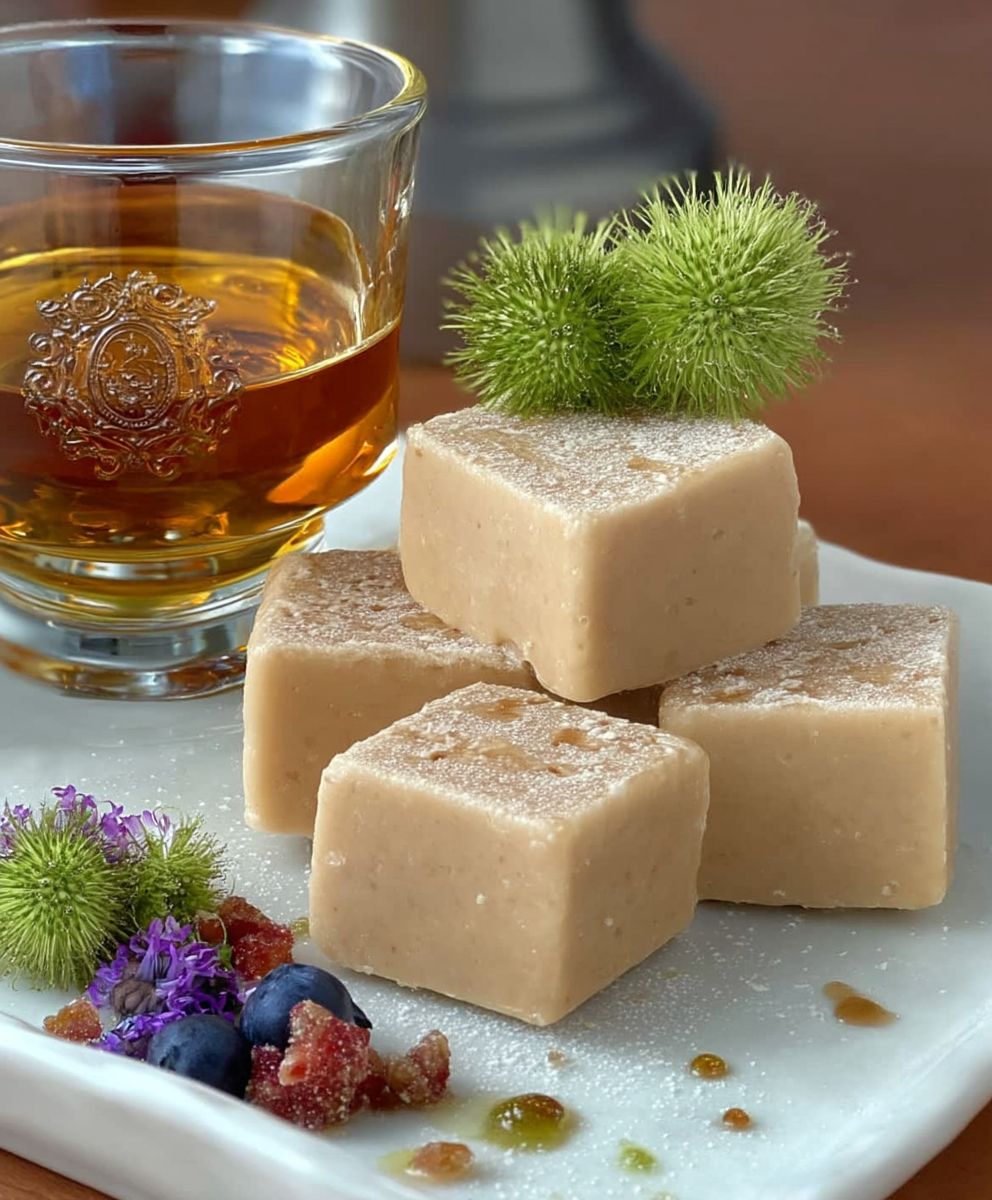
Conclusion:
And there you have it! This Scottish Tablet recipe is truly a must-try for anyone with a sweet tooth and a penchant for melt-in-your-mouth confectionery. It’s more than just a sweet treat; it’s a taste of Scotland, a comforting indulgence, and a surprisingly simple recipe to master. I know, I know, the sugar content might seem a little daunting, but trust me, one bite and you’ll understand why it’s worth every single calorie.
What makes this recipe so special? Well, first and foremost, it’s the texture. Forget hard, brittle candy; this tablet is crumbly, slightly grainy, and dissolves on your tongue in a burst of sugary goodness. The flavor is intensely sweet, with a subtle hint of butter and vanilla that perfectly complements the caramelized sugar. It’s a symphony of flavors and textures that will leave you craving more.
But beyond the taste and texture, this recipe is also incredibly versatile. While the classic version is divine on its own, there are so many ways to customize it to your liking. For a richer, more decadent treat, try adding a tablespoon or two of golden syrup to the mixture. This will give the tablet a slightly chewier texture and a deeper caramel flavor. If you’re a fan of nuts, consider adding a handful of chopped walnuts or pecans to the mixture before pouring it into the pan. The nuts will add a delightful crunch and a nutty flavor that pairs perfectly with the sweetness of the tablet.
For a festive twist, you could even add a sprinkle of sea salt to the top of the tablet after it’s been poured into the pan. The salt will enhance the sweetness and create a delightful sweet-and-salty flavor combination. And if you’re feeling adventurous, why not try adding a splash of your favorite liqueur to the mixture? A little bit of whisky or rum would add a sophisticated touch and a warm, boozy flavor.
Serving suggestions? The possibilities are endless! Enjoy a piece of Scottish Tablet with a cup of tea or coffee for a delightful afternoon treat. Crumble it over ice cream or yogurt for a decadent dessert topping. Or simply enjoy it straight from the pan I won’t judge! It also makes a wonderful homemade gift for friends and family. Package it up in a pretty box or tin, and you’ll have a gift that’s sure to be appreciated.
I truly believe that this recipe is a winner, and I can’t wait for you to try it. Don’t be intimidated by the sugar just follow the instructions carefully, and you’ll be rewarded with a batch of delicious, homemade tablet that will rival anything you can buy in the shops.
So, what are you waiting for? Gather your ingredients, put on your apron, and get ready to make some magic in the kitchen. I’m confident that you’ll love this recipe as much as I do. And when you do, please, please, please share your experience with me! I’d love to hear how it turned out, what variations you tried, and what your friends and family thought of it. You can leave a comment below, tag me on social media, or even send me an email. I’m always eager to hear from fellow food lovers and to see your creations. Happy baking!
Scottish Tablet: The Ultimate Guide to Scotland's Sweet Treat
Creamy, melt-in-your-mouth Scottish Tablet with a unique, slightly grainy texture. A traditional Scottish confection that's surprisingly easy to make!
Ingredients
- 2 lbs (approximately 900g) Granulated Sugar
- 1 (14 oz) can (approximately 400g) Sweetened Condensed Milk
- 4 oz (113g) Unsalted Butter, cut into cubes
- 1/4 cup (60ml) Whole Milk
- 1 teaspoon (5ml) Vanilla Extract (Optional)
Instructions
- Combine Ingredients: In a large, heavy-bottomed saucepan, combine the granulated sugar, sweetened condensed milk, butter (cubed), and whole milk.
- Initial Dissolving: Place the saucepan over medium heat. Stir the mixture constantly with a wooden spoon or heat-resistant spatula until the sugar is completely dissolved.
- Bring to a Boil: Increase the heat slightly and bring the mixture to a rolling boil, stirring constantly.
- Constant Stirring is Key: Once at a rolling boil, stir constantly to prevent sticking and burning.
- Monitor the Temperature (Optional): If using a candy thermometer, aim for 240-245°F (115-118°C).
- Visual Cues and the Cold Water Test: If not using a thermometer, watch for a light caramel color and smaller, more numerous bubbles. Test for doneness by dropping a small spoonful into cold water; it should form a soft, pliable ball.
- Reaching the Right Consistency: The mixture is ready when it’s a light caramel color, thick enough to leave a trail on the surface when you stir, and passes the cold water test.
- Remove from Heat: Once the mixture reaches the desired consistency and temperature (or passes the cold water test), immediately remove the saucepan from the heat.
- Add Vanilla Extract (Optional): Stir in the vanilla extract (if using) quickly and thoroughly.
- Beat the Mixture: Using a wooden spoon, beat the mixture vigorously for several minutes until it thickens, loses its glossy appearance, and becomes more opaque and slightly grainy.
- Prepare the Pan: Line an 8×8 inch (20×20 cm) square baking pan with parchment paper, leaving an overhang on two sides. Lightly grease the parchment paper with butter or cooking spray.
- Pour into the Pan: Pour the beaten tablet mixture into the prepared pan and spread it evenly with a spatula.
- Optional: Score the Tablet: If you want to make it easier to break the tablet into pieces later, score the surface of the tablet with a sharp knife while it’s still warm. This creates lines along which the tablet will easily break.
- Cool Completely: Allow the tablet to cool completely at room temperature for several hours or overnight.
- Remove from the Pan: Once the tablet is completely cool and firm, lift it out of the pan using the parchment paper overhang.
- Cut into Squares: Place the tablet on a cutting board and use a sharp knife to cut it into squares or rectangles.
- Storage: Store the Scottish tablet in an airtight container at room temperature.
Notes
- Use a heavy-bottomed saucepan to prevent scorching.
- Constant stirring is crucial to prevent sticking and burning.
- The beating process is essential for achieving the characteristic grainy texture.
- Do not refrigerate the tablet, as this can affect the texture.
- Troubleshooting:
- Grainy Tablet: Ensure sugar is fully dissolved at the beginning.
- Tablet Too Hard: Avoid overcooking. Use a thermometer or the cold water test.
- Tablet Too Soft: Continue cooking until it reaches the soft-ball stage.
- Tablet Sticking: Line the pan with parchment paper and grease it.
- Variations:
- Chocolate Tablet: Add 2-3 tablespoons of cocoa powder with the sugar.
- Nutty Tablet: Stir in 1/2 cup of chopped nuts after beating.
- Whisky Tablet: Add a tablespoon of Scotch whisky after removing from heat.


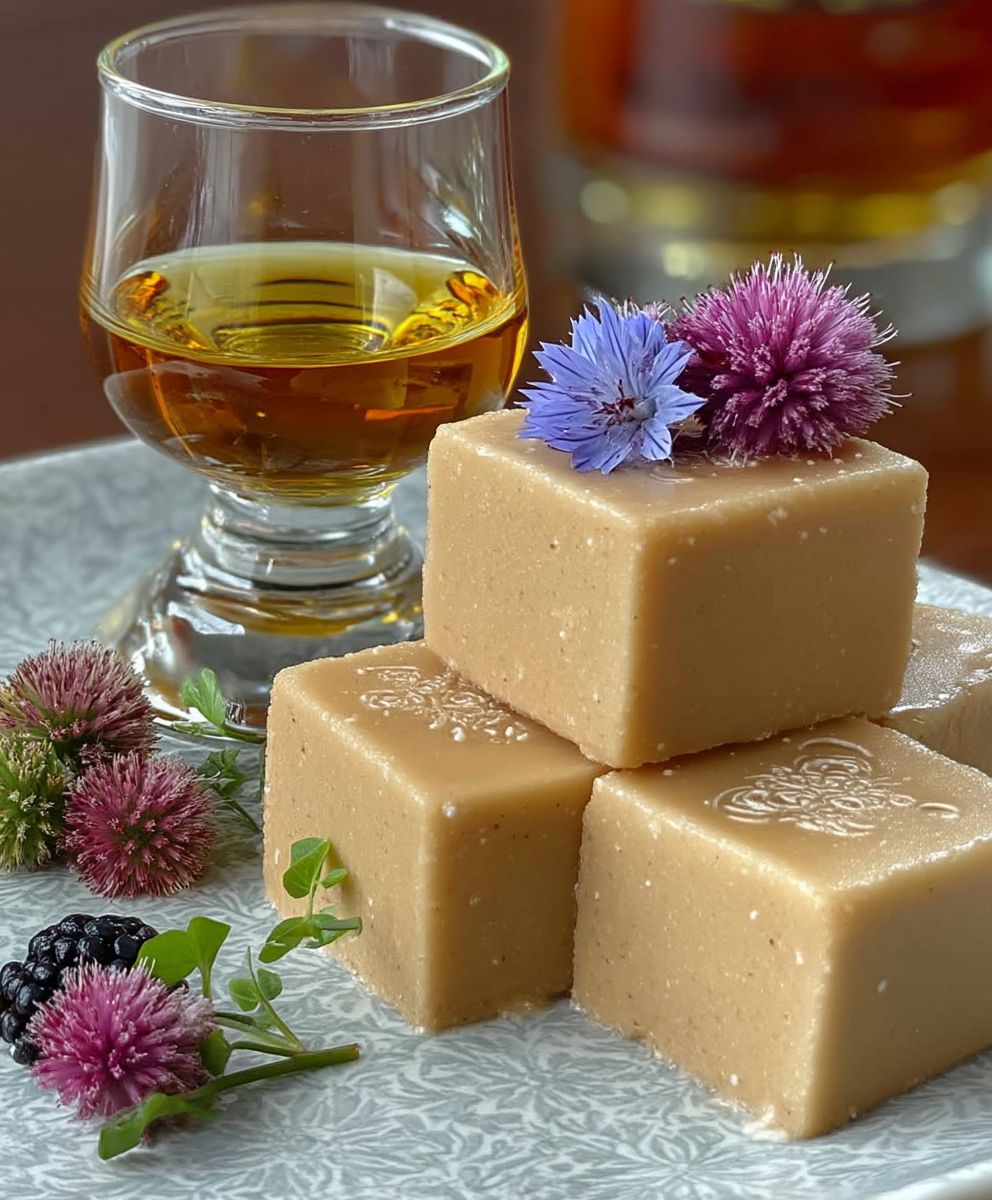
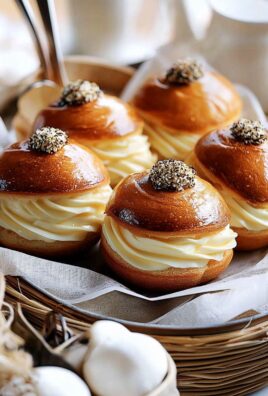
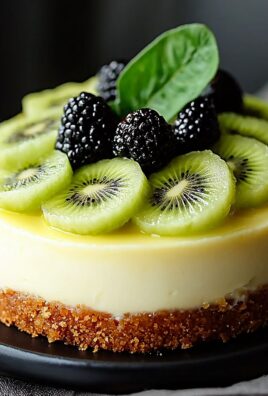
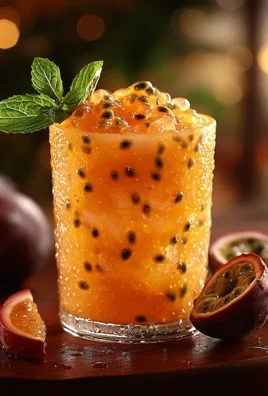
Leave a Comment